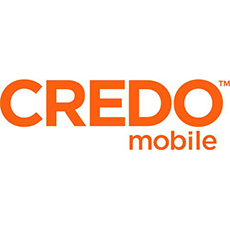Choosing the Best Cell Phone Carrier
There are tons of factors to consider when choosing a new carrier -- especially if you’re planning to sign a two-year contract.
Not sure where to start?
These 8 tips cover the most critical considerations to help you limit your options and find a service provider likely to meet your needs.
1. Avoid Coverage Surprises with the Help of Third-Party Tools
Before you commit to a cell phone carrier, you should ensure they have strong coverage in the areas you frequent. After all, while you can still do some things on Wi-Fi, a phone without a signal is much less useful.
Check for the best coverage in your area for any service providers you’re considering. But don’t just trust the carrier’s coverage maps. These are often estimations. Worse still, many sites include disclaimers that service is not guaranteed despite what the map says.
Instead, use a crowd-sourced coverage map -- such as OpenSignal or RootMetrics -- or ask a family member or friend who uses the same carrier about their coverage.
While exact signal strength will vary between devices slightly, both sources should provide a better idea of what to expect than carrier coverage maps.
2. Find the Right Payment Arrangements and Contract Terms
Depending on your plan or carrier, how you pay for your service and how long you’re on the hook for your contract will vary. So finding a good fit for your financial situation and preferences is important.
While postpaid plans often offer greater flexibility, prepaid plans are more accessible. This is because they rarely require credit checks and contracts.
Then there are SIM-only plans which are often priced lower than monthly plans and feature shorter (or no) term commitments. But they don’t include a phone.
If you don’t already own a compatible phone you’d like to bring with you, SIM-only plans might cost more upfront than other options.
Most cell phone companies offer a mix of each plan type. However, there are also a wide range of prepaid-only providers out there.
Check that the carrier you’re considering offers the payment and contract options you prefer.
3. Assess Your Plan Needs and Compare Prices from Different Service Providers for Optimal Savings
In most cases, data allotments will be the biggest consideration between service providers. These days talk and text services are fairly cheap, so the amount of data you use will have the largest impact on what you pay.
If you’re looking for service for the whole family, be sure to check out carriers who offer the best family or group plans. Not only are they easier to manage since you won’t need to login to multiple accounts, but most offer additional savings with each new line.
Planning to use your phone to stream video or tether often to use your laptop or tablet on the go? If so, you should consider a carrier who offers unlimited data plans.
While many “Unlimited” plans are not truly unlimited, they still offer a larger pool of bandwidth before things slow down than what most plans with a set data allotment do.
If you’re someone with a lot of gadgets, be sure to pick a company that will allow you to add your tablet or wearables to your plan at a reduced rate.
Finally, while the prices at top cell phone companies are often very similar, be sure to compare what you can get from the competition before signing any contracts.
Sometimes promotions or price drops can provide surprise savings.
4. Don’t Forget About Smaller Cell Phone Companies
Also known as MVNOs, smaller carriers often offer service using the same networks as the larger options on the market.
However, while coverage might be similar, most MVNOs require a compromise or two.
Some have limited phone compatibility while others might have fewer options to contact support. In almost all cases, you’ll also find that MNVOs have fewer retail locations.
Perhaps the biggest difference is that many MNVOs do not offer device leasing or financing. So if you need a brand new phone, you likely must pay upfront for the phone itself.
If these considerations aren’t deal breakers for you, looking at MVNOs might be an excellent way to save money on your monthly phone bill.
5. Research Customer Service Options to Avoid Surprises When You Need Help
Even with the best service providers or in-depth technical knowledge, you’ll probably need to contact support occasionally.
If you prefer to ask questions or make purchases in person, be sure the carriers you’re considering have easy-to-access retail locations in your area.
If you prefer to handle things remotely, phone, chat, or online forum support might be a better fit.
Also, consider calling into the support line or stopping by the store before you decide and see how they treat you and answer questions. Easy-to-reach support means nothing if they’re unhelpful or hostile.
Finally, be sure to look at fees the carrier might charge for support issues and services. If you run into a major problem, all those fees could add up fast.
6. Consider Your Phone Needs and How You Plan to Purchase New Phones Before Committing
Unless you plan to bring an unlocked phone to your new carrier, choosing a service provider with a large device selection ensures you can get the model you want.
Companies with larger phone selections are also ideal for families as you can pick up cheaper options for the kids and the latest and greatest for the adults.
Once you find a service provider who carries the phone you want, be sure to look at payment options.
Buying outright, financing your phone, or leasing your phone all come with different phone purchasing considerations depending on your financial situation and preferences.
7. Make Sure Those Perks and Add-ons Are Worth It
Many cell phone companies like to entice new customers with special promotions and deals. However, it’s important to look at the real value of these promotions before you sign any papers.
Deals which offer free phones with service often include lower-end phones and those free streaming services are only valuable if you will use them.
If you think the perks are worth it, be sure to check terms. For example, many plans which include free streaming services don’t include them for the full term of the contract.
Rebates are another common pitfall. In most cases, funds arrive on a prepaid gift card but might take 1-3 months to show up. If you’re expecting to use the rebate to offset costs, it could take a while before you can spend the rebate anywhere.
8. Get Multiple Points of View with the Help of Reviews
Finally, be sure to check carrier reviews. But do so smartly…
People are more likely to leave a review when they’re unhappy or angry. So that naturally skews online reviews to a degree.
Looking in the middle of the reviews -- say 3- or 4-star reviews -- can often weed out those people that just like to complain, have an issue that isn’t actually the carrier’s fault, or want to praise their favorite company but provide little useful feedback.
You can also ask friends and family who use the carrier you’re considering.
This is often the best source of unbiased “reviews”. They not only have experience with the company you’re considering but if they live nearby they likely frequent many of the same areas as you and can comment on coverage.
Summary
By looking at a few key areas, it’s easy to limit your choices and home in on the best cell phone companies for your needs.
With the considerations presented above, you can eliminate the obvious choices from your list with ease.
For more great resources related to choosing a carrier and plan, check out The Informr’s cell plan buyer's guides.














































